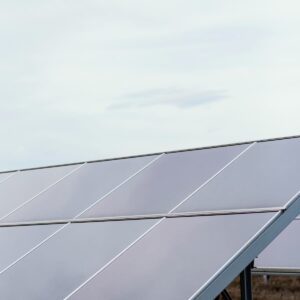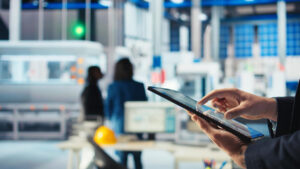As the world continues to grapple with the impacts of climate change, the construction industry is being called upon to play a critical role in mitigating its contribution to the problem. Because of this, building companies are shifting more and more in the direction of sustainable methods and away from techniques that harm the environment. The need for more sustainable construction technology from clients and regulatory restrictions are driving this change.
For many firms, nevertheless, switching to sustainable construction methods can be a difficult undertaking. Maintaining sustainable practices while juggling the demands of contractual responsibilities, environmental regulations, and legal compliance can seem like an impossible task. However, companies can work toward striking this crucial balance if they take the appropriate approach.
The secret to achieving sustainability goals is creating an all-encompassing environmental protection strategy with a variety of components that offer a well-organized framework for achievement.
The goal of sustainable construction technology is to guarantee that the final structure has as little of an impact on the environment as possible. Furthermore, environmentally friendly materials and components must be used in sustainable building. Solar panels, energy-efficient roof hatches, and energy-efficient insulation are examples of sustainable building practices.
Table of Contents
What is Sustainable Construction Technology?
The process of constructing and remodeling buildings to minimize their impact on the environment and carbon footprint is known as sustainable construction technology. It entails the use of eco-friendly products, methods, and technology that don’t deplete natural resources.
Sustainable construction is guided by many core principles:
- Energy Efficiency: Increasing the utilization of renewable energy sources while reducing energy consumption should be the goal of building design and construction.
- Materials: It is recommended to use sustainable materials, such as locally obtained or repurposed materials.
- Water Conservation: Structures should be planned to use as little water as possible while safeguarding nearby water supplies.
- Interior Air Quality: Lowering the chance of interior pollution and enhancing indoor air quality can be accomplished by using ecologically friendly products and methods.
- Impact on the Site: Construction activities should have the least negative impact on the surrounding ecosystem possible, protecting natural habitats and reducing soil erosion.
- Comfort: Ensuring building inhabitants’ well-being is essential when they are using the facility. By using thermal, mitigation, and light comfort techniques in these areas, we can make it better.
By adhering to these guidelines, sustainable construction technology facilitates the shift to a more sustainable society and lessens the environmental effects of buildings.
Suggested article to read: Sustainable Construction; Comprehensive Guide 2024
Sustainable Construction Technology: A Complex Issue for Construction Companies
One facet of the incredibly intricate construction sector that struggles with ever-tougher laws about sustainability and health and safety is sustainability construction technology.
Leaders in engineering and construction must balance a variety of conflicting demands as they work to keep costs under control, maintain effective working relationships with numerous suppliers and subcontractors, and reduce energy costs and carbon emissions while operating heavy, energy-consuming machinery.
In addition, efforts are being made to create buildings that are more technologically sophisticated, taller, greener, healthier, and scalable than in the past.
The business community understands that these pressing, frequently conflicting challenges must be addressed, particularly within supply chains. A sustainable supply chain, according to 59% of respondents, is a competitive differentiator; nevertheless, 47% of respondents claimed that greater process complexity gets in the way of their capacity to reach sustainability construction technology.
Throughout the whole project lifecycle, from the moment a company is granted a project to employing the correct personnel, delivering the necessary supplies, equipment, and materials to the site, and erecting the structure to completion on schedule, managing the complexity of construction projects is difficult. After the project is completed, there is continued operation and maintenance. It is becoming more and more difficult to try to implement sustainable construction technology in all of these areas.
Three Factors Influencing Sustainable Change
Here are some factors influencing sustainable construction technology:
Growing Governmental Regulations: New laws requiring greater environmental measures, such as the European Green Deal and the Construction Products Regulation (CPR), raise scrutiny over project design, construction, and maintenance. The UN has set several challenging goals for sustainable construction technology. For instance, the Paris Agreement specifies that by 2030, the objective reduction rate for energy intensity per square meter in buildings will be about 30%. Engineering and construction firms are being compelled by additional laws to explore more sustainable and circular solutions.
Keeping Costs Under Control: For the majority of engineering and construction firms, cost-effectiveness is still a major factor. Business executives must organize and oversee building projects utilizing the most affordable goods and raw resources while making sure that laborers and large machines are not idle, given the rising cost of raw materials.
Using sustainable construction technology may not be chosen by decision-makers if they are too costly. According to the poll, half of the engineering and construction participants stated that the main factor assisting them in achieving their sustainability objectives would be a decrease in the price of sustainable products. However, cutting the high cost of energy consumption will improve sustainability efforts for this energy-intensive business and reduce prices.
Growing Environmental Concerns: An increasing number of clients and proprietors are putting pressure on engineering and construction firms to provide more environmentally friendly buildings. An increasing number of investors and employees are challenging conventional building methods and advocating for more sustainable construction technology practices as the demand for environmental considerations grows.

Benefits of Sustainable Construction Technology
There are numerous opportunities for sustainable construction technology. These days, sustainability is more affordable and worthwhile than ever. Sustainability is not just a publicity gimmick; it is a sound investment with a quantifiable return. There are three categories of advantages to sustainable construction technology: social, environmental, and financial.
Environmental Benefits
Environmental benefits of sustainable construction technology:
- Decrease of Waste: Over the past several decades, concerns about global warming have grown on a global scale. Natural resources are rapidly running out as a result of widespread pollution.
Sustainable construction technology developments can be leveraged by the building sector to mitigate the negative consequences of climate change. Furthermore, using renewable resources and practices helps guarantee a clean environment by cutting waste considerably.
- Lowering of Carbon Footprint: The Environmental Protection Agency (EPA) estimates that thirty percent of greenhouse gas emissions in the US are caused by buildings. Green initiatives are being adopted and supported by large corporations both domestically and internationally.
Large corporations and property owners are choosing to enforce sustainable construction technology, which is advantageous for both enterprises and society.
Suggested article to read: Discovering the World’s Top 21 Sustainable Buildings
Social Benefits
Social benefits of implementing sustainable construction technology:
- Encouragement of Healthy Lifestyles: Our surroundings have an impact on our mental, emotional, and physical well-being. It has been demonstrated that Sustainable construction technology enhances the general quality of life for its occupants. Residents’ health, quality of life, and stress levels have greatly improved because of modernized heating, lighting, power sources, air quality, and ergonomic elements.
- Worldwide Effect: Companies that use Sustainable construction technology practices help to make the world a more sustainable place, which benefits coming generations. Because it sets an example for the entire industry, the worldwide social impact of sustainable construction is greater than the advantages for local communities and enterprises.
- Better Reputation: As public awareness grows, the market for sustainable construction technology is expanding rapidly. Consequently, the green building sector doubles in size every three years. Astute proprietors of construction companies recognize that cultivating a sustainable reputation is crucial to drawing in additional business.
Economic Benefits
How sustainable construction technology benefits the economy:
- Boosting the Economy: Over $134.3 billion in labor income is produced by the green construction industry, according to the United States Green Construction Council (USGBC). This indicates that by creating jobs to fulfill the growing need for construction workers, sustainable construction technology strengthens the US economy.
- Economy of Cost: Significantly lower maintenance and operating expenses are associated with sustainable construction technology. Specially designed components are installed in these buildings to lower water and energy costs. Although there may be a high upfront cost associated with sustainable construction technology practices, these features ultimately pay for themselves.
- Reduced Material Costs: Using environmentally friendly building materials while preserving structural integrity and quality is known as sustainability. Reusing and recycling materials also contribute to a decrease in the cost of materials.
- A Rise in Output: By eliminating delays, cutting down on rework, optimizing project workflows, and lowering the need for maintenance, sustainable construction techniques increase productivity.
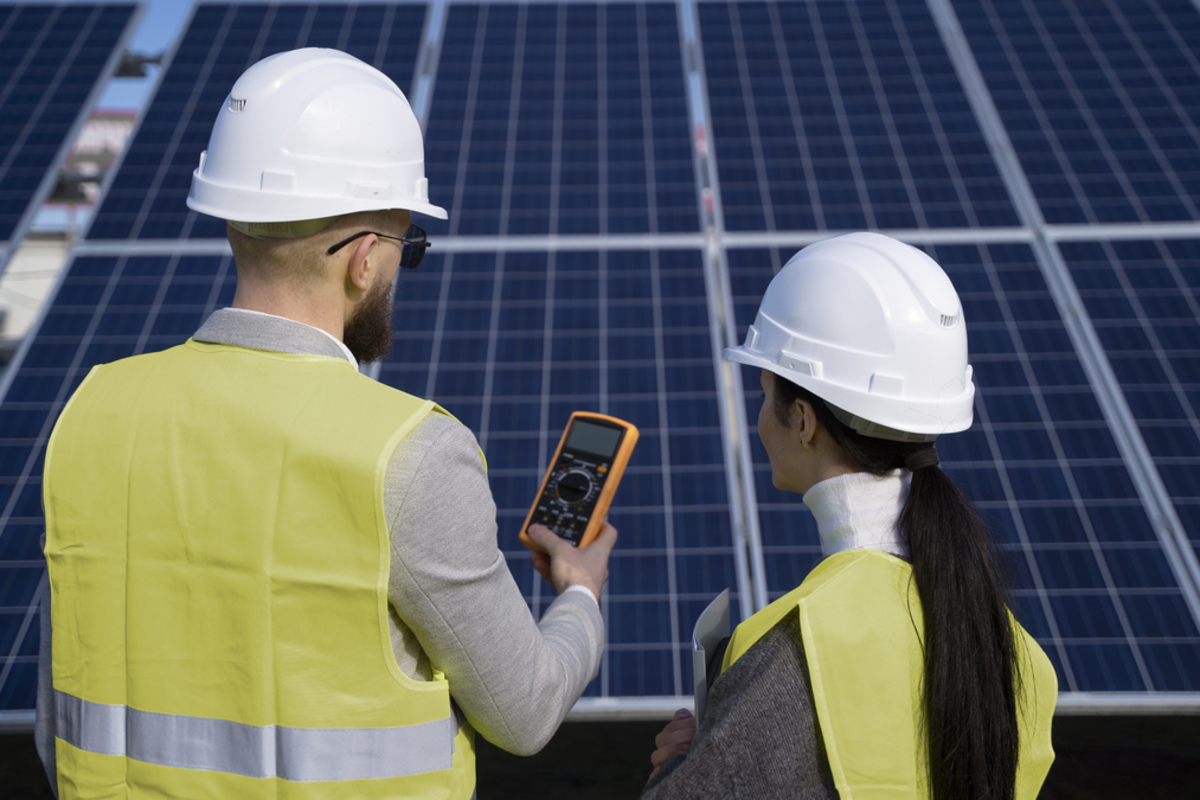
12 Sustainable Construction Technologies
One cannot stress the significance of sustainable construction technology in the modern world given the issues we confront, like resource depletion and climate change.
The goal of sustainable construction technology is to reduce a building’s negative environmental effects while enhancing its indoor environmental quality, water efficiency, and energy efficiency.
We can create more habitable and sustainable surroundings that facilitate the shift to a low-carbon future by implementing sustainable construction technology.
The use of renewable energy sources, energy-efficient design, water conservation, the use of green walls and roofs, the use of sustainable materials, net-zero energy buildings, zero-waste buildings, intelligent buildings, and retrofits and renovations of existing structures are some of the key sustainable construction technology that will be prominent in the next years.
1. Increased Focus on Sustainability and Resilience
Buildings will be built and constructed with a greater emphasis on sustainable construction technology and resilience, making them more environmentally friendly and better equipped to withstand and respond to environmental challenges like climate change and natural catastrophes.
This could entail taking several actions, including:
- Employing Energy-Efficient Design: Energy-efficient buildings consume less energy during operation, which lowers their carbon footprint and lowers energy expenses. Insulation, effective heating and cooling systems, and other energy-saving techniques are examples of sustainable construction technology.
- Utilizing Renewable Energy Sources: By utilizing solar or wind power, buildings can lessen their dependency on fossil fuels and their carbon emissions. Small-scale wind turbines or solar panels may be used for this.
- Water-Efficient Building Design: In regions where water scarcity is an issue, buildings that maximize water consumption and minimize waste can help ease the burden on water resources. Greywater systems and low-flow plumbing fixtures may be used in this.
- Using Sustainable Materials: Structures that make use of quickly renewable or recycled materials have the potential to lessen their environmental effect and encourage the adoption of sustainable construction technology.
- Designing for Resilience: Buildings that are designed to be more resilient to natural disasters and other environmental challenges, such as floods, hurricanes, and earthquakes, can help to reduce damage and disruption caused by these events. This can entail utilizing stronger and more resilient building materials as well as architectural elements like green walls and roofs, which can absorb runoff and provide wind and rain protection.
Using sustainable construction technology and resilience in building design aims to provide more resilient, long-lasting, and flexible structures that can lessen the effects of climate change.
2. Use of Renewable Energy Sources
Incorporating sustainable construction technology that produces heat or power from renewable, natural sources like the sun, wind, or water is known as using renewable energy sources in building design. Utilizing renewable energy sources aims to minimize a building’s carbon footprint and its dependency on fossil fuels, which exacerbate air pollution and climate change.
Common instances of renewable energy sources that could be used in architectural design include:
- Solar Energy: To produce electricity using the sun’s energy, photovoltaic (PV) panels can be mounted on a building’s walls or roof. Solar thermal systems can also be utilized for space heating and water heating.
- Wind Energy: To produce electricity from the wind, small-scale wind turbines can be mounted on a roof or a different building.
- Hydroelectric Power: A modest hydroelectric power system can produce electricity for buildings that are close to a water source, like a river or stream.
- Geothermal Energy: Buildings can be heated and cooled using geothermal systems, which draw heat from the earth. Compared to conventional HVAC systems, they may be more energy-efficient and have a lower carbon impact.
By lowering a building’s energy expenses and dependency on fossil fuels, the use of renewable energy sources can promote a more ecologically friendly and sustainable built environment.
Suggested article to read: Top 24 Sustainable Construction Technologies in 2024
3. Energy-Efficient Design
An energy-efficient building is designed and built with techniques and sustainable construction technology that minimize energy use and carbon emissions. This may entail taking several actions, including:
- Insulation: An appropriately insulated building can minimize the need for heating and cooling systems by keeping a structure cool in the summer and warm in the winter.
- Efficient Heating and Cooling Systems: By using high-efficiency heating and cooling systems, like geothermal or air source heat pumps, a building’s energy consumption for maintaining a pleasant temperature can be decreased.
- Energy-Efficient Lighting: Using LED lights or other energy-efficient lighting fixtures can drastically lower a building’s energy usage.
- Energy-Efficient Equipment and Appliances: Energy Star-certified equipment and appliances, which are made to be more energy-efficient than ordinary models, can also assist in lowering the amount of energy used in a building.
- Passive Design Techniques: By utilizing the building’s natural heating and cooling processes, sustainable construction technology —like appropriate orientation, window placement, and thermal mass utilization—can assist in lowering the energy requirements of a structure.
The overall goal of energy-efficient design is to produce structures that require less energy to run, which lowers carbon emissions and lowers energy expenses.
4. Water Conservation
Using techniques and sustainable construction technology to decrease water use and reduce waste in a structure is known as “water conservation” in building design. This is getting more and more significant as concerns about water scarcity spread throughout the globe.
The following are a few instances of water-saving techniques that could be applied to building design:
- Low-Flow Plumbing Fixtures: These devices, which include showerheads, faucets, and toilets, can drastically cut down on the quantity of water consumed in a facility.
- Greywater Systems: These systems reuse wastewater from showers, sinks, and washing machines for non-potable applications including toilet flushing and irrigation. This may lessen the requirement for freshwater in a structure.
- Rainwater Harvesting: Systems that collect and hold rainwater are used to irrigate gardens and flush toilets. Both stormwater runoff and the need for treated water may be decreased as a result.
- Water-Efficient Landscaping: You can cut down on the quantity of water required for landscaping by using drought-resistant plants and installing effective irrigation systems.
Water conservation in architectural design aims to use water as efficiently as possible while minimizing waste to lessen the demand for water resources and promote their use in more sustainable ways.

5. Green Roofs and Walls
Plants and other vegetation cover features such as walls and roofs. They can offer several social, economic, and environmental advantages, including:
- Controlling the Temperature of a Structure: Insulating a building with green walls and roofs can keep it warmer in the winter and more comfortable in the summer. By doing this, you can increase indoor comfort and lower the energy required for heating and cooling.
- Reducing Stormwater Runoff: Rainwater can be absorbed by green walls and rooftops, which will lessen the quantity of stormwater entering municipal systems. By doing so, floods may be avoided and the burden on stormwater infrastructure may be lessened.
- Enhancing Air Quality: By producing oxygen and absorbing pollutants, green roofs, and wall plants can enhance the local air quality.
- Providing Habitat for Wildlife: Urban areas can benefit from increased biodiversity by having green walls and roofs that serve as a home for birds, insects, and other species.
- Enhancing the Aesthetic Appeal of the Built Environment: Green walls and roofs can give a building visual character and beauty while creating a welcoming outdoor area for visitors to enjoy.
All things considered, green walls and roofs can offer several social, cultural, and financial advantages in addition to making the built environment more habitable and sustainable.
6. Use of Sustainable Materials
Using ecologically friendly and sustainably sourced materials is known as “using sustainable materials in building design.” Reducing the environmental impact of building construction and promoting the use of more sustainable construction technology items are the two main objectives of employing sustainable materials. Several sustainable materials that can be incorporated into building design are as follows:
- Recycled Materials: Recycled steel, aluminum, and concrete are examples of materials that can be used to lessen the need for new resources and the negative effects that extraction and processing have on the environment.
- Materials that Grow Quickly: You can utilize quickly growing materials, such as straw or bamboo, in place of more conventional building materials. Compared to traditional materials like wood, these can be grown and harvested faster while leaving less of an environmental impact.
- Low-Impact Materials: Compared to conventional materials, some materials, such as low-VOC (volatile organic compound) paints and finishes, may have less of an adverse effect on the environment.
- Reusable and Repairable Materials: You may increase the longevity and cut down on waste by using materials that are simple to reuse or repair.
In general, including sustainable materials in building design can help create a built environment that is more sustainable and kind to the environment.
7. Net-zero Energy Buildings
Buildings with net-zero energy are made to generate as much energy as they use in a given year. Renewable energy credits can be purchased or on-site renewable energy sources, such as solar or wind turbines, can be used to accomplish this.
The goal of net-zero energy buildings is to minimize carbon emissions and lessen or completely remove a structure’s need for fossil fuels.
For a building to reach net-zero energy status, it needs to be built with highly sustainable construction technology including insulation, energy-efficient lighting and appliances, and efficient heating and cooling systems.
The building also needs to be able to generate enough renewable energy to meet its energy needs. To offset the building’s energy use, this may entail buying renewable energy credits or installing on-site renewable energy devices like photovoltaic panels or tiny wind turbines.
Reduced energy expenses and a smaller carbon footprint are only two advantages that net-zero energy buildings may offer, both economically and environmentally. They can also help create a low-carbon future by acting as an example for more environmentally friendly building design.
Suggested article to read: Top 7 Sustainable Architecture Projects
8. Zero-Waste Buildings
Zero-waste buildings are made to employ as much recycled material as possible while producing the least amount of garbage possible. Reducing waste’s negative environmental effects and promoting more sustainable resource usage are the goals of zero-waste facilities. Several tactics can be employed to attain zero waste in buildings, such as:
- Using Reusable Products rather than disposable ones and creating waste-minimization-focused systems and processes are two ways to reduce the quantity of waste produced. For instance, a facility may implement composting systems or refillable water bottles in place of single-use plastic bottles to lower the quantity of food waste produced.
- Making the Most of Recycled Materials: Recycled steel and concrete, for example, can be used to make building materials that minimize the environmental effects of extraction and processing while also reducing the need for new materials.
- Putting Recycling Systems in Place: Recycling rates in buildings can be raised by installing recycling systems, such as containers for paper, plastic, and other recyclables.
- Donating or Reusing Materials: Buildings can recycle or donate things that are no longer needed, including office furniture or building supplies, rather than disposing of them in a landfill.
To enable more sustainable resource use and lessen the impact of waste on the environment, zero-waste buildings aim to optimize the use of recycled materials and decrease trash.
9. Smart Buildings
By utilizing sustainable construction technology, such as building management systems (BMS), intelligent buildings are intended to maximize building performance and minimize energy consumption. A building management system (BMS) is a computer-based system that keeps an eye on and manages the electrical and mechanical systems of a building, including lighting, security, HVAC, and ventilation. Building performance can be maximized with the use of a BMS by:
- Energy Use Monitoring and Control: A BMS can keep an eye on energy use in real-time and make necessary system adjustments to cut down on energy waste. For instance, it might lower the demand for heating or cooling by turning off the lights in vacant rooms or modifying the building’s temperature.
- Real-Time Data: Building managers can pinpoint areas for improvement and boost efficiency with the help of a building management system (BMS), which can provide real-time data on a facility’s energy use.
- Task Automation: By automating routines like regulating the thermostat or shutting off lights, a building management system (BMS) can save energy use and increase building efficiency.
- Notifications and Alerts: A BMS can send out notifications and alerts regarding things like equipment malfunctions or unusual energy usage, which can aid in the prompt identification and resolution of issues.
Using intelligent technologies, smart buildings aim to minimize energy use and maximize building performance. This can lessen the impact of buildings on the environment, lower energy costs, and increase building efficiency.
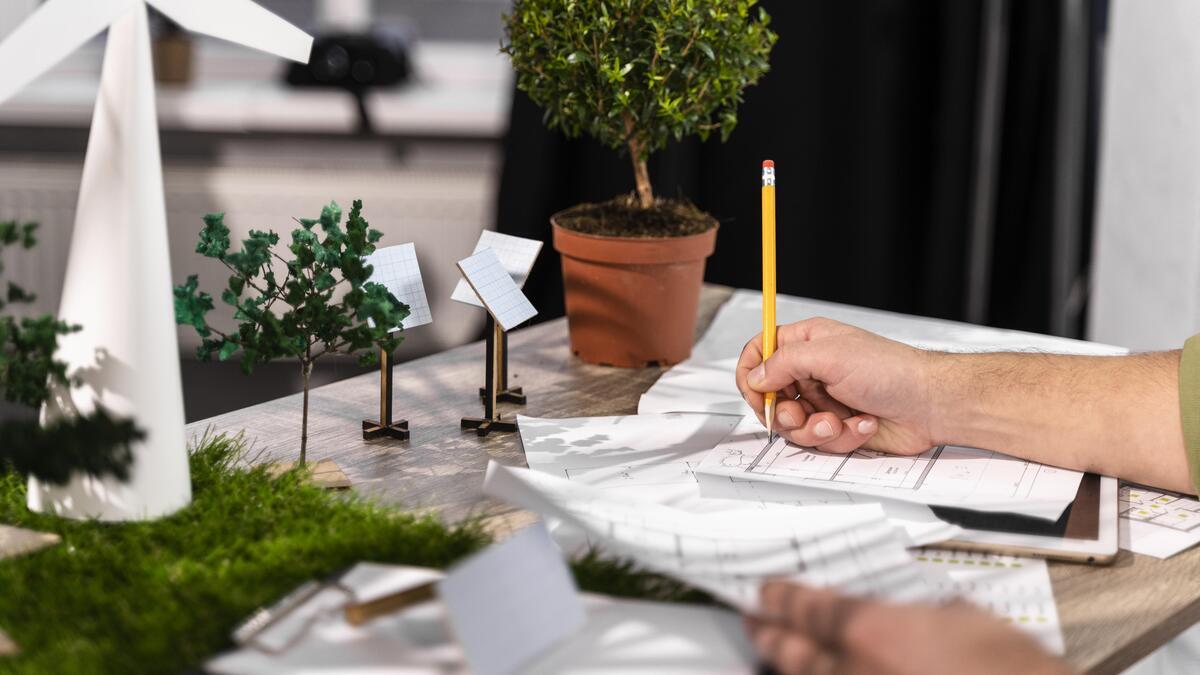
10. Retrofits and Renovations
Renovations and retrofits are additions or changes made to already-existing structures to increase their sustainability and performance. Renovations and retrofits may entail a range of actions, including:
- Energy-Efficient Upgrades: Sustainable construction technology, lights, and heating and cooling systems can all be installed during retrofits and renovations. These systems can assist in cutting down on energy use and expenses.
- Recycled or Quickly Regenerated Materials are examples of sustainable materials that can be used in retrofits and restorations to lessen the environmental effect of building development.
- Water Conservation Measures: Installing greywater systems and low-flow plumbing fixtures during retrofits and renovations can assist in cutting down on waste and water usage.
- Green Features: To increase a building’s sustainability, retrofits and renovations may entail adding green features like solar panels, rainwater harvesting systems, and green walls and roofs.
The overall goals of renovations and retrofits are to lessen the environmental impact of existing buildings while enhancing their sustainability and performance. The number of buildings that are repaired or modified to be more sustainable may rise as more people become aware of the advantages of green building.
11. Site Selection
To safeguard regional ecosystems, sustainable building practices should try to maintain natural habitats and reduce soil erosion. To reduce the effect on the website, several tactics can be employed:
- Site Selection: Choosing a location with care helps lessen the influence on the environment. To lessen the influence on the nearby ecology, one can, for instance, choose a location that has already undergone disturbance or stay away from areas with delicate habitats.
- Erosion Control: Preventing soil erosion and safeguarding nearby water supplies can be accomplished by putting in place erosion control measures, such as erecting barriers made of sediment or stabilizing slopes.
- Preservation of Habitat: By safeguarding and maintaining the site’s natural habitats, we can promote biodiversity and lessen our influence on nearby ecosystems.
- Sustainable Landscaping: Reducing the site’s impact can be achieved by using sustainable landscaping strategies, such as using native plants or rainwater harvesting systems.
Building projects can reduce their environmental impact and facilitate the shift to a more sustainable society by implementing these measures.
12. More Comfort
A well-built, pleasant building can have a good effect on the productivity and well-being of its residents. A building’s comfort can be increased by the application of several techniques:
- Temperature Management: Keeping the interior of a building comfortable can be achieved with proper temperature control. Windows, air conditioning and heating systems, and insulation can all help achieve this.
- Lighting: Proper lighting can enhance a room’s utility and comfort. While natural lighting is ideal, artificial lighting can also be used in a comfortable and energy-efficient manner.
- Acoustics: Well-thought-out acoustic design can lower noise levels and increase a room’s comfort.
- Indoor Air Quality: Comfort depends on having healthy indoor air. It is possible to lessen the chance of indoor pollution and enhance indoor air quality by utilizing ecologically friendly products and methods.
By putting these tactics into practice, buildings may give their residents a comfortable environment, which will improve their well-being and productivity.
Examples of Sustainable Construction Worldwide
There are many examples of sustainable construction projects around the world. Here are a few examples:
- The Bullitt Center in Seattle, Washington, is a six-story commercial building designed to be the greenest office building in the world. It features several sustainable features, including a rainwater collection system, solar panels, and energy-efficient heating and cooling systems.
- The Eden Project in Cornwall, England, is a visitor attraction that features a series of giant greenhouses that showcase a variety of plant species from around the world. The greenhouses are constructed from sustainable materials, and renewable energy sources power the project.
- The Passive House in Darmstadt, Germany, is a residential building designed to use minimal energy for heating and cooling. It features a high level of insulation and is designed to take advantage of passive solar heating.
- The Phipps Conservatory and Botanical Gardens in Pittsburgh, Pennsylvania, is a sustainable building with several green roofs and an energy-efficient heating and cooling system. It was designed to be a model of sustainable construction and is used as a learning resource for the community.
These are just a few examples of construction that implemented sustainable technology. Many other examples of sustainable construction worldwide, ranging from small residential buildings to large commercial projects.
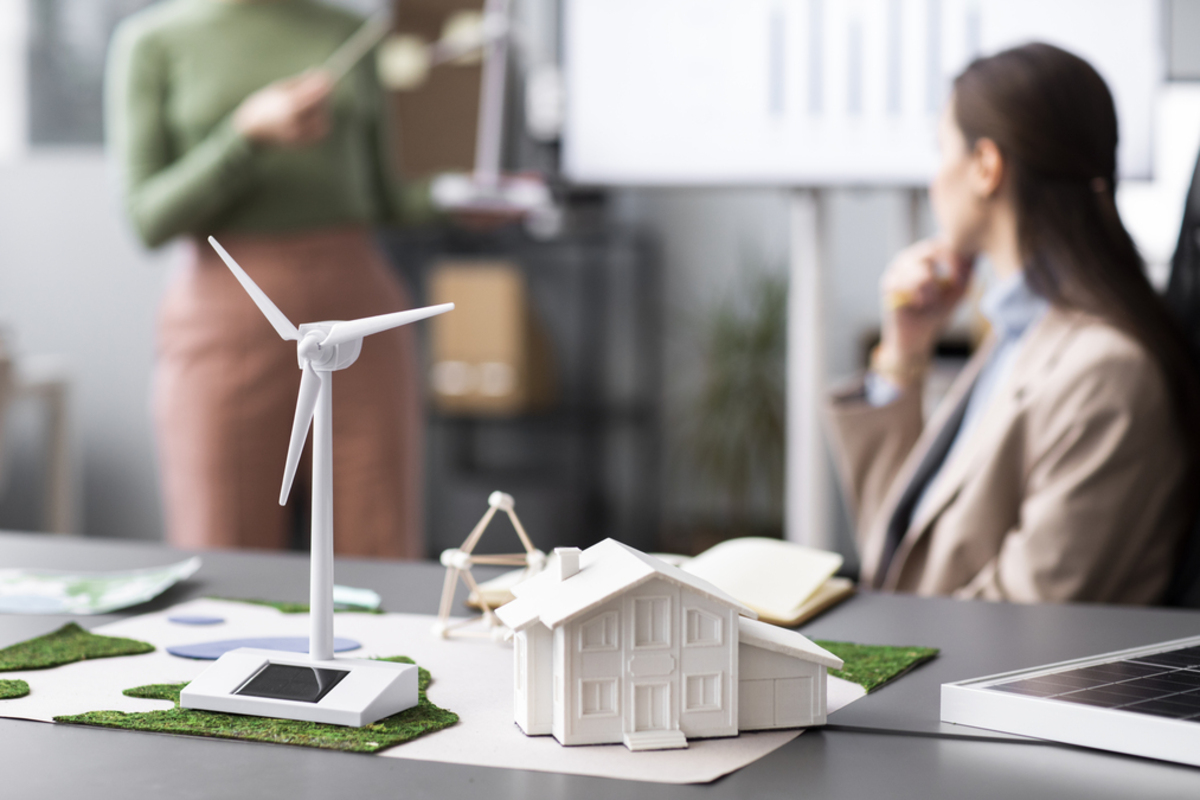
Conclusion
As awareness of the environmental impacts of buildings grows, there is likely to be an increased focus on designing and constructing more sustainable and resilient structures.
The process of constructing or remodeling a structure with less energy, water, and material use and less waste production is known as sustainable construction technology. Because it can lessen the detrimental effects of building projects on the environment and increase the long-term sustainability of our built environment, sustainable construction technology is one of the major trends in the industry.
In addition to lowering greenhouse gas emissions and conserving resources, sustainable construction technology also enhances the long-term resilience of our built environment.
Some of the critical green building trends for the coming years include an increased focus on sustainability and resilience, the use of renewable energy sources, energy-efficient design, water conservation, the use of green roofs and walls, the use of sustainable materials, net-zero energy buildings, zero-waste buildings, intelligent buildings, and retrofits and renovations of existing structures.
Sustainable construction technology can help reduce buildings’ environmental impact, improve energy efficiency, and support more sustainable resource use. Sustainability is no longer a tick-box or checklist exercise. It is a crucial area of investment where businesses can get prospects for competitive advantage as well as significant returns.
Resources:
Procore | ForConstructionPros | Planradar | Trimble | Ugreen | Indeed | Countfire | Construction21 | Forbes | BuilderTrend | BigRentz | Proest
For the pictures: Freepik



